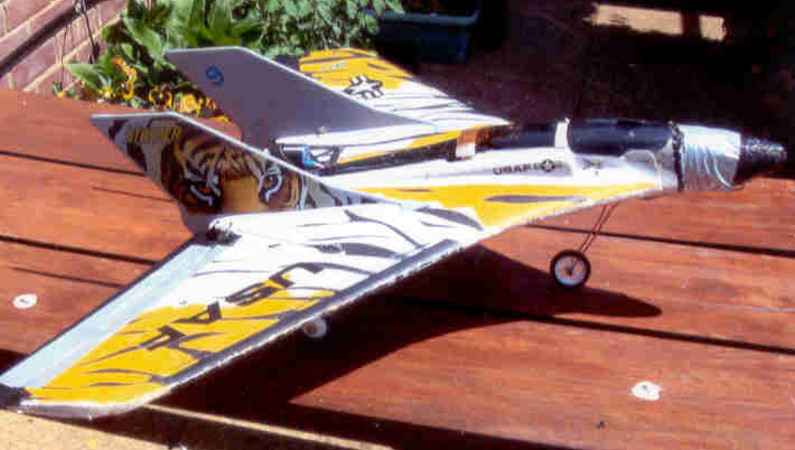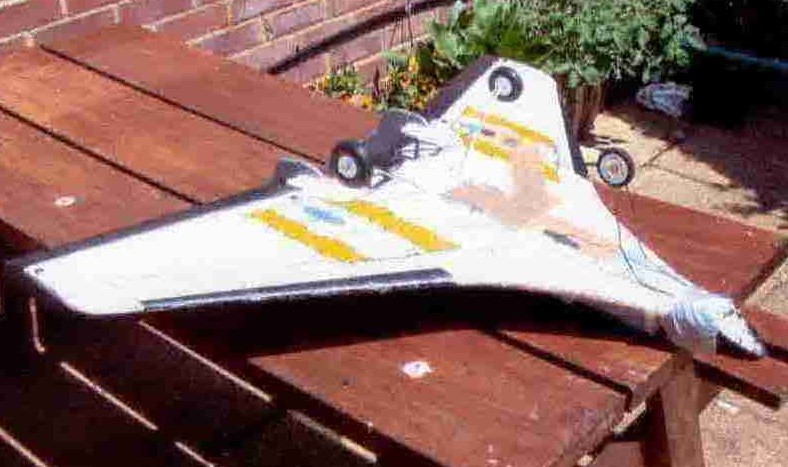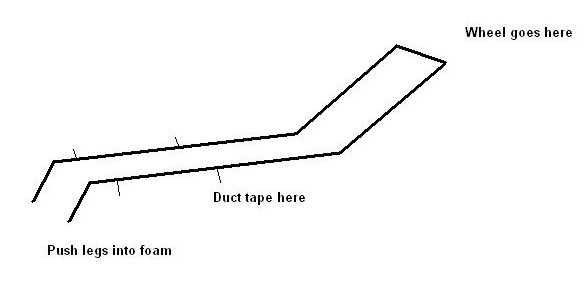|
|
|||||||||||||
|
Christchurch and District Model Flying Club |
|
3 wheels on my Wagon By brian wiseman
Some time ago my son bought me as a surprise, a Stryker. This is a Foam Delta made to look like an American fighter. It has a prop at the back and is electric. You see larger versions of these at shows piloted by young men flying at a hundred miles an hour about three feet above the runway. I did not expect to be able to fly it. I thought that it would be too difficult and twitchy. Well it wasn’t. Very stable it is. And you do not have to fly it too fast, although landing it is quite an art. I have managed to get it down well each time. The only problems I have had is when I am flying it slowly. I was trying to make it go backwards in a high wind and it stalled, and went into a spiral dive. Twice it has done this, once ending up in a gorse bush so no damage and once hitting the ground. It now has started to look a bit worse for wear. But it is easily stuck together with window sealant. We have never looked back since (looked back…window… joke, get it, Oh never mind.) There is one problem with it and that is in throwing it off. For a start it needs to get to flying speed quickly, so you need to have it at full throttle. But it still has a few seconds when it is hard to steer before flying speed is reached. If I get someone to throw it off, then we are alright. But if I have to throw it and then get my hand to the control in the transmitter it can get a bit hairy. On one occasion the plane, caught in a gust of wind turned and nearly took my head off. At Beaulieu we fly off concrete, there is a grass strip and some heather at one side, and I can usually get it down on there without too much trouble, but I thought that I would like to take it off like a proper plane so I wanted to put wheels on it and be able to take it off without throwing it. How to fit wheels on a foam delta? Well the rear ones are easy, I obtained from Sussex Model Supplies a light wire undercarriage. You can see it on the photos. Scoring a grove in the foam I pushed it in and lathered it over with window sealant. I expected it to falloff either in flight or on landing but it has proved to be very satisfactory. But the problem is how to fix a front wheel. I know about putting a block of wood in the fuselage and drilling it for a rod of the wheel, but any hard landing would tear it out of the plane and destroy the nose. So I invented one. This invention can be seen if the Editor displays the rather rude picture of the plane turned upside down displaying all its tackle. I might say that the invention is Patent Pending, I shall expect to sell it worldwide and become rich and famous. (Time for a trip to Dragons’ Den Brian? – Ed)
This is what I did. I took a coat hanger, cut off a long bit of wire, doubled it back on itself after putting a small wheel in the bend. Then bending the two sides of the wire at not quite a right angle I bent over the ends, see diagram.
I realise that for you engineering blokes this may be too complicated. I know that you cannot read fast, so will write this slowly. The two loose ends which were bent at (nearly) right angles were pushed firmly into the foam to a depth of about half an inch. In metric I think that is about half a kilometre. Then taking some duct tape I would it around the front of the plane to keep the wire in place. Does it work? The answer is yes… If l do a very gentle landing the plane bows as the weight is taken on the front. If as is more likely I hit too hard then the front bows and stays down because the wire bends and does not spring back up. I have had nearly twenty landings with the wheels and it takes off and lands well. What about flying? It is a good deal slower, but still fast. It was supposed to get up to 100 mph, but I doubt if it ever did. With the wheels, it will overtake most things at Beaulieu, so I can recommend the system to you provided I get some royalties from it. People who see the front wheel have a job keeping a straight face, but unlike me it works. |
|
[Home] [Chairman's Chatter] [Editorial] [Diary of a Flier] [3 Wheels] [Swift Kit] [Bubble Dancer] [Dummy Engines] [Kit Review 2] [Tailpiece] |


